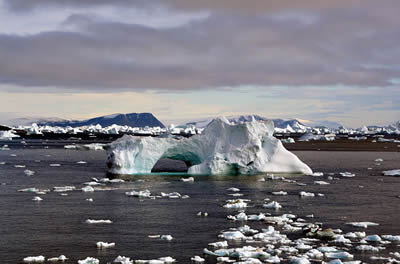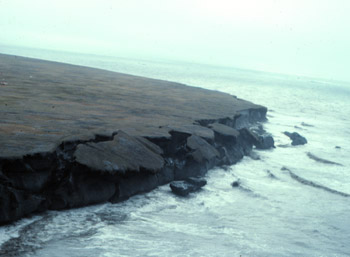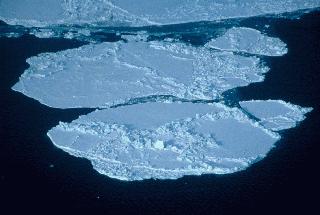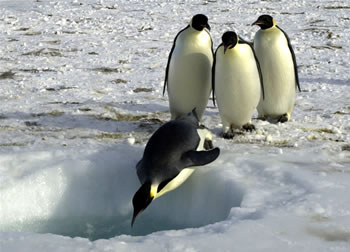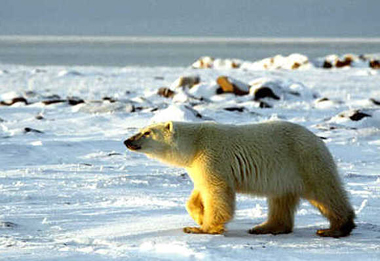Click on image for full size
Image courtesy of Mila Zinkova, Creative Commons Attribution ShareAlike license
Greenlandís Ice Is Melting Faster
There is a lot of ice on Greenland. But as our planet gets warmer, Greenlandís ice is melting. Scientists have figured out that the ice is melting faster now. More ice melted during the summer of 2007 than scientists had ever seen before.
Scientist Konrad Steffen and his research team have lots of ways of looking at Greenlandís ice. From far above, satellites collect data that tell the team where ice is melting and how fast ice is moving towards the ocean. On the ice, monitoring stations record information about the ice sheet. And flying over the top of the ice in a helicopter the scientists take pictures with special cameras and a rotating laser to find tunnels in the ice.
The vertical tunnels through the ice are like drains. Water, from melted ice, flows through the tunnels to the bottom of the ice sheet. At the bottom of the ice sheet, the water makes the ice slip faster towards the ocean - a bit like slipping on a banana peel. The ice moves more quickly now than it used to.
When Greenlandís ice melts, the water is added to the ocean, causing sea level to rise. Sea level also rises when icebergs calve off a glacier into the ocean. If all the ice that is on Greenland were to melt or calve into the ocean, sea level would rise more than 7 meters (about 21 feet.) Currently, melting Greenland ice increases sea level by about half a millimeter each year. If ice melts faster, then sea level will rise faster.
The Arctic is warming faster than other places on Earth. The warmer temperatures mean that there are many changes in the environment. Greenlandís melting ice is one of many changes. The amount of sea ice in the Arctic Ocean has been getting smaller, permafrost soils in the Arctic have been thawing, and Arctic ecosystems are changing.


